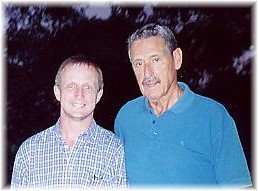Roveda on iconography
Defying dynasties - by Manote Tripathi, The Nation, Thailand, Nov 2007
An expert in Buddhist art questions the Hindu influence in four of Angkor's temples
There's always something to be discovered in Khmer art. Just ask renowned Angkor scholar Vittorio Roveda. In a recent Siam Society lecture, Roveda questioned the accepted Hindu attribution of the Angkor temples of Banteay Samre, Chau Say Tevoda, Thomannon and Beng Mealea and presented evidence of underlying Buddhist iconography. A former palaeontologist who obtained his first degree in the 1950s, Roveda switched interests in the 1980s and went on to obtain a second doctorate in art history and archaeology from London University's School of Oriental and Asian Studies. He has spent the past two decades studying Buddhist iconography and the mythology of Khmer art from the eighth to the 13th centuries and has published five books including Khmer Mythology, Sacred Angkor and Preah Vihear Guidebook. "I'm interested in Buddhist iconography because I love Buddhist paintings and the Buddha's teachings, especially the institution that 'you are what you think'. That's so true," he says.
Roveda is particularly interested in Khmer history covering the 12th and 13th centuries, a period characterised by dynastic rivalries. The era also marks the Khmer Empire's transition from Hinduism to Mahayana Buddhism in the 1300s, and then back to Hinduism before the eventual rise of Theravada Buddhism in the 1400s. A systematic defacing of Buddha images occurred in this period, especially after the reign of Jayavarman VII, who was in power from 1181 to sometime after 1206, he says, pointing to the various Buddhist elements in Angkor temples that were subsequently replaced by Hindu-inspired sculpture. According to Roveda, defacing religious images was motivated more by politics than religion, and as the throne changed hands from one dynasty to the next, iconoclasm became a major political tool, one that was used until the reign of Jayavarman VIII (1243-1295).
A devout follower of Mahayana Buddhism, Jayavarman VII is considered the last of the great kings of Angkor because of the building projects carried out under his reign. He built the new capital of Angkor Thom and at its centre constructed the Bayon as the state temple, with its towers bearing faces said to be those of the Boddhisattva Lokeshvara (Avalokiteshvara). Under his rule of less than 40 years, hundreds of monuments were built. Other edifices constructed during his reign include the temples of Ta Prohm, Banteay Kdei and Preah Khan. However, art historians point out that his monuments are considered artistically inferior to those in earlier periods because most of the buildings were built in haste. The abrupt construction of Buddhist temples was probably for two reasons. First, the king was trying to introduce a new religion to a predominantly Hindu population. Second, the need to construct so many temples reflected his determination to legitimise his rule, as there may have been other contenders closer to the royal bloodline.
Three reigns later, the empire reverted to Hinduism, with Jayavarman VIII launching a campaign to destroy more than 10,000 Buddha images in the kingdom. Under his rule, many Buddhist temples built by Jayavarman VII were converted into Hindu temples. Jayavarman VIII was deposed and succeeded by his son-in-law Srindravarman (1295-1308) who was a follower of Theravada Buddhism. "The defacing occurred after a change of religion or ruling dynasty in the Khmer court. At the centre of religious iconoclasm is power distribution. When Jayavarman VIII took the throne, he wanted to destroy anything that referred to Jayavarman VII. He destroyed not just Buddha images, but also paintings. What we're talking about here concerns the affairs of the upper-crust of society, royalty itself. We don't know anything about the people of Cambodia, only the aristocracy," he says.
Roveda adds that the power struggle in the Khmer court appears Hindu-inspired. In the Angkor period, the Khmer imported the Hindu caste system, with the elite court clergy (or the purohito) considered more powerful than the king. "Conflict often arose because the purohito wanted to be made king, to be appointed the chakravarty, or the king of the kings. So what happened was that the king needed the purohito and the purohito needed the king to stay in power. The relationship between the king and the purohito was so strong that the king would give his daughter or sister to the purohito as wife so as to create another royal bloodline that consisted of priests and royals. Religion thus became an intimate part of the king's power," he says. Having visited most of the Khmer temples, Roveda offers some tips on how to distinguish the Buddhist from the Hindu temples. "If there are Buddha statues and reliefs at the centre of the temples, they are [originally] Buddhist. Temples that have inscriptions at the entrance are usually not Buddhist."
My first meeting with author Vittorio Roveda in January 2006


0 Comments:
Post a Comment
<< Home